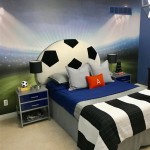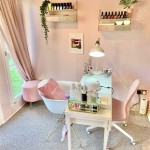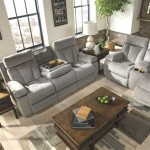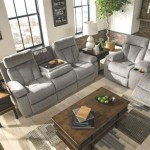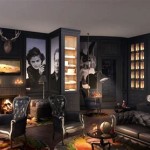Hall, Stairs, and Landing Decorating Ideas: Creating a Seamless Transition
The hall, stairs, and landing often serve as transitional spaces within a home, connecting different areas and levels. These areas are frequently overlooked in decorating schemes, but they offer significant opportunities to enhance the overall aesthetic and functionality of a dwelling. Thoughtful design choices in these spaces can contribute to a more cohesive and welcoming atmosphere.
Effective decorating of the hall, stairs, and landing requires consideration of various factors, including available space, natural light, existing architectural features, and the overall style of the home. By addressing these elements, individuals can create a design that is both visually appealing and practical.
Maximizing Space and Light
One of the primary challenges in decorating these transitional areas is often the limited space and the absence of abundant natural light. Employing strategies to maximize both space and light is crucial for creating a more open and inviting environment.
Mirrors are a valuable tool for enhancing the perception of space and reflecting light. A strategically placed mirror can create the illusion of a larger area, particularly in narrow hallways or landings. The size and shape of the mirror should be proportionate to the space. Consider a large statement mirror to make a bold impact, or several smaller mirrors arranged gallery-style along a wall.
Light colors are essential for brightening up dark hallways and landings. Opt for paint colors in shades of white, cream, or pastel tones to reflect light and create a sense of airiness. Lighter flooring options, such as light-colored wood or tiles, can also contribute to a brighter space. If darker colors are preferred, they can be used sparingly as accents, perhaps on a feature wall or in accessories.
Adequate lighting is paramount. Overheads lights are often inadequate on their own. Combining overhead lighting with wall sconces, table lamps (if space permits), or even strategically placed floor lamps can create layers of light and eliminate shadows. Consider the temperature of the light bulbs; warm light can create a cozy ambiance, while cool light can brighten the space and make it feel more modern. Motion sensor lights are also a practical addition, especially in stairwells, providing illumination only when needed.
Storage solutions can also improve the function and feel of these spaces. Built-in storage units, slim console tables with drawers, or wall-mounted shelves can help to declutter the area and provide a place for essential items. Ensure that any storage solutions are proportionate to the space and do not obstruct walkways.
Creating Visual Interest and Style
Beyond maximizing space and light, it is important to inject personality and style into the hall, stairs, and landing. This can be achieved through various decorative elements, including artwork, paint treatments, and accessories.
Artwork is a powerful way to add visual interest to these often-overlooked spaces. Consider creating a gallery wall with a collection of prints, photographs, or paintings. The artwork should be carefully curated to reflect personal tastes and complement the overall style of the home. Consistent framing and spacing can create a cohesive and polished look. Alternatively, a single, large statement piece of art can serve as a focal point, drawing the eye and adding drama to the space.
Paint treatments can also transform a hallway or landing. Consider using wallpaper to add texture and pattern to a wall. Geometric patterns, floral designs, or textured wallpaper can instantly elevate the space. For a more subtle approach, consider using different paint colors to create an accent wall or to highlight architectural details. Painted paneling, wainscoting, or a stenciled design can add character and visual interest.
Stair runners are both functional and decorative. They provide traction on the stairs, reducing the risk of slips and falls, while also adding a touch of style and comfort. Choose a runner that complements the color scheme and design of the surrounding areas. Different materials and patterns, such as sisal, wool, or geometric prints, can create a variety of looks. Ensure that the runner is professionally installed for a secure and aesthetically pleasing finish.
Accessories and décor can enhance the overall look of the hall, stairs, and landing. Console tables, if space allows, can be styled with lamps, vases, and decorative objects. Plants can add a touch of nature and freshness to the space. A stylish umbrella stand or coat rack can be both functional and decorative. Pay attention to the scale and proportion of accessories; avoid overcrowding the space with too many items.
Ensuring Functionality and Safety
While aesthetics are important, it is equally crucial to prioritize functionality and safety in the hall, stairs, and landing. These areas often experience high levels of foot traffic, so it is essential to create a design that is both practical and safe.
Proper lighting is paramount for safety, particularly on stairwells. Ensure that stairs are well-lit with overhead lights, wall sconces, or even LED strip lighting installed along the treads. The lights should be bright enough to illuminate the stairs clearly and prevent accidents. Consider installing motion sensor lights that automatically turn on when someone approaches the stairs.
Handrails are an essential safety feature, especially for young children, elderly individuals, or those with mobility issues. Ensure that handrails are securely installed and meet building code requirements. The handrail should be easy to grip and extend the full length of the staircase. Consider the material and style of the handrail; wood, metal, or glass can all be used to create different looks.
Flooring materials should be slip-resistant, especially on stairs and landings. Consider using textured tiles, carpets, or stair runners to provide traction. Avoid using highly polished surfaces that can become slippery when wet. Regularly clean and maintain flooring to ensure that it remains safe and free from debris.
Clear pathways are essential for safe and easy movement. Avoid cluttering hallways and landings with furniture or accessories that could obstruct walkways. Ensure that there is ample space to maneuver around corners and on stairs. Consider the placement of furniture and accessories carefully to minimize the risk of tripping or bumping into objects.
Fire safety is also a crucial consideration. Ensure that smoke detectors are installed in the hall and landing areas. Keep hallways and stairwells clear of flammable materials, such as stacks of newspapers or cardboard boxes. Have a fire extinguisher readily available and ensure that all household members know how to use it. A well-maintained and uncluttered space is a safer one.
Incorporating these considerations when decorating the hall, stairs and landing will ensure that the space is both aesthetically pleasing and functionally safe, improving the comfort and long-term safety of the inhabitants. The goal is to seamlessly integrate the space with the surrounding environment while offering a safe and welcoming transition between levels.

Hall Stairs And Landing Decorating Ideas Stairway Staircase Wall Decor

Halls Stairs And Landings Gallery Impressions Ie Painting Decorating In South Dublin

10 Clever Hallway Stairs And Landing Ideas You Need To See Fifi Mcgee Narrow Decorating Stair Decor Small

8 Bold Hallway Decorating Ideas

Hall Stairs Landing Design South Dublin Project Paula Mccarthy Interiors

Hall Stairs And Landing Decorating Ideas Neville Johnson

8 Bold Hallway Decorating Ideas

Creative Ideas For Stair Landing Decor Thistlewood Farm

Hall Stairs Landing Inspiration Carpetright

29 Stair Landing Ideas For A Creative Use Of Space
